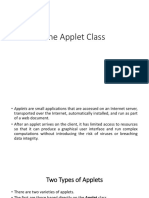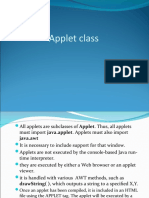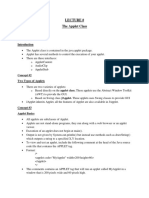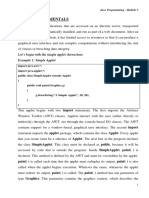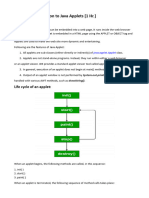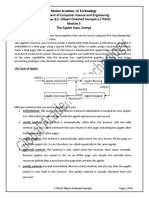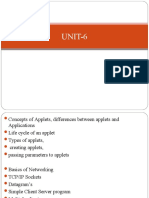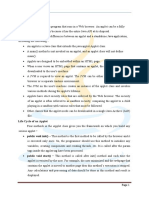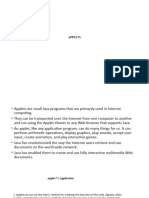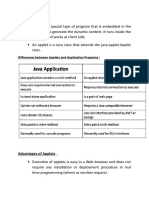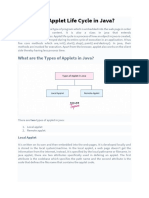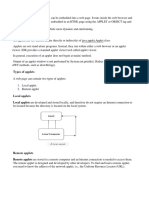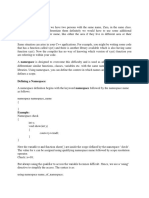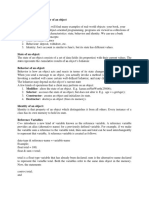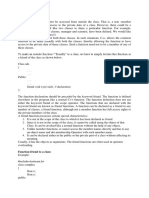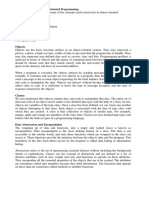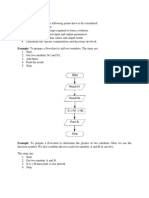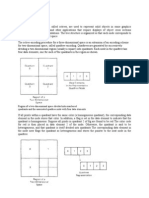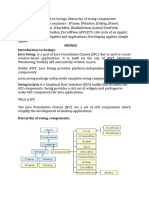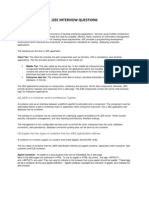0% found this document useful (0 votes)
78 views5 pagesMechanism. Output To Your Applet's Window Is Not Performed by
Applet Basics
There are two types of applets - those based on the Applet class using AWT and those based on the JApplet class using Swing. Applets run within a web browser or applet viewer and do not have a main method. Execution is started by init(), start(), stop(), and destroy() methods. Output is done through AWT/Swing methods rather than System.out. Applets are specified in HTML and viewed using an applet viewer. The Applet class provides window support and methods for images/audio.
Uploaded by
mail.sushilk8403Copyright
© © All Rights Reserved
We take content rights seriously. If you suspect this is your content, claim it here.
Available Formats
Download as PDF, TXT or read online on Scribd
0% found this document useful (0 votes)
78 views5 pagesMechanism. Output To Your Applet's Window Is Not Performed by
Applet Basics
There are two types of applets - those based on the Applet class using AWT and those based on the JApplet class using Swing. Applets run within a web browser or applet viewer and do not have a main method. Execution is started by init(), start(), stop(), and destroy() methods. Output is done through AWT/Swing methods rather than System.out. Applets are specified in HTML and viewed using an applet viewer. The Applet class provides window support and methods for images/audio.
Uploaded by
mail.sushilk8403Copyright
© © All Rights Reserved
We take content rights seriously. If you suspect this is your content, claim it here.
Available Formats
Download as PDF, TXT or read online on Scribd
/ 5
